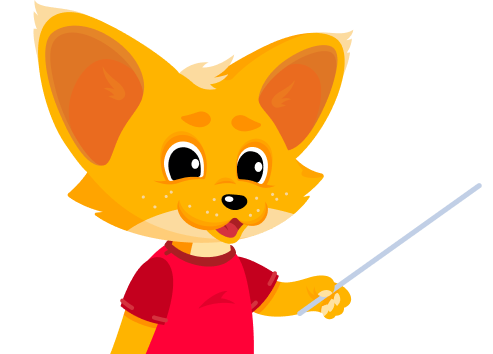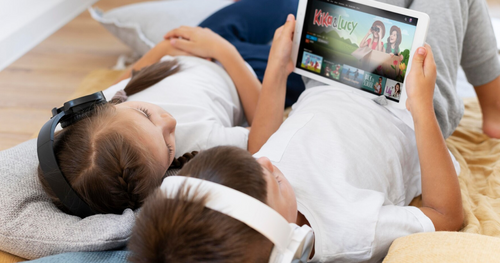Teaching English as a Second Language (ESL) can be a challenging feat, especially when it comes to vocabulary building. Students may struggle to memorize new words, recall their meanings, and pronounce them correctly. This is where flashcards come in. Flashcards are an excellent tool for ESL teachers to make language learning more engaging and effective. In this article, we will discuss the benefits of using flashcards, different ways to use them, fun flashcard games for ESL kids, and where you can find free printable flashcards.
What are the Benefits of Using Flashcards in ESL Classroom?
Flashcards offer numerous benefits for ESL learners, including:
Improved Vocabulary
Using flashcards in the classroom can help improve students' vocabulary skills. By repeated exposure to new words and phrases, students can gradually internalize their meanings and usage. They may also learn synonyms, antonyms, and idiomatic expressions, making their English more nuanced and expressive.
Enhanced Memory Retention
Flashcards use a technique called spaced repetition, which is an effective way to enhance memory retention. By reviewing the cards at intervals, students are more likely to remember the words for a longer time. This is especially useful for students who have difficulty learning new words and need to reinforce them several times.
Eased Pronunciation
Flashcards can help students improve their pronunciation. By associating a word with a picture, students can better understand and remember its correct pronunciation. Teachers can also use phonetic symbols in the cards to help students practice their articulation of different sounds.
How Can Flashcards be Used Effectively in the Classroom?
Here are some ways you can use flashcards effectively in the classroom:
Single Flashcard Identification
Show a flashcard to the class and have the students say the word. This is an effective way to develop students' speaking and listening skills. You can make it more challenging by timing the exercise and seeing how many words students can say correctly in one minute.
Use Flashcards to Teach Grammar
You can use flashcards to illustrate different verb tenses, prepositions, or adjective forms. For example, for the past simple tense, you can have a set of flashcards with action pictures, such as running, jumping, or eating, and their corresponding past tense form. This is also an effective way to teach irregular verbs.
Flashcard Relay
Divide the class into teams and have them play a relay race game. Each team member runs to a designated spot, picks up a flashcard, says the word, and runs back to tag the next player. The first team to finish wins. This is a fun and engaging way to review vocabulary and get students moving.
What are Some Fun Flashcard Games for ESL Kids?
Here are three fun flashcard games for ESL kids:
Pictionary
Divide the class into teams and give each team a set of vocabulary flashcards. One student from each team draws a word from a hat and has one minute to draw it on the board while their team tries to guess it. The team that guesses the most words wins.
Go Fish
Give each student five or six vocabulary cards. Students take turns asking each other for a specific vocabulary word, such as "Do you have the picture card of the lion?" If the other student has the card, they give it to the player who asked, and that player can ask for another card. The first player to collect all four cards of a set (e.g., animal flashcards) wins.
Memory Match
Create pairs of flashcards with images and words, then shuffle and place them face down on a table. The students take turns flipping over two cards to try and find a match. If they match, the student keeps the cards and goes again. The student with the most matches at the end wins.
Charades
One student picks a flashcard and acts out the word on the card without speaking, while the other students try to guess what the word is. The student who guesses correctly gets to act out the next flashcard.
Hot Potato
Students pass a flashcard around in a circle while music plays. When the music stops, the student holding the card has to say the word on the card or use it in a sentence correctly. If they can't, they're out. Play continues until there's only one student left.
Guess Who
Choose a flashcard and describe the object on the card without saying its name. For example, "It has four legs and barks" for a dog. The other students try to guess what the word is based on the clues.
Simon Says
Choose a set of flashcards and hold them up one at a time. If the word on the card starts with "Simon says", the students have to do the action or say the word. If the word on the card doesn't start with "Simon says", the students shouldn't do anything. Any student who makes a mistake is out.
Tic-Tac-Toe
Draw a tic-tac-toe grid on the board or use a premade template. Students take turns choosing a flashcard and placing it on the grid. The goal is to get three in a row (horizontal, vertical, or diagonal).
Hangman
Choose a word from a flashcard and draw a hangman scaffold. Students take turns guessing letters in the word. For each incorrect guess, a body part is added to the hangman. If the students guess the word before the hangman is complete, they win. If the hangman is complete before they guess the word, they lose.
Bingo
Create bingo cards with images or words from your flashcards. Distribute the cards to students, then call out the words or show the images from the flashcards. Students mark off the corresponding squares on their bingo cards until someone gets a bingo.
Where Can I Find Free Printable Flashcards for Teaching ESL?
If you are looking for free, high-quality printable flashcards for teaching ESL, here are three reliable sources:
ESL Kids
ESL Kids offers an extensive collection of printable flashcards on various topics, such as food, animals, transportation, and weather. The cards are colorful, well-designed, and easy to print.
Boggles World
Boggles World has a wide selection of printable flashcards, worksheets, and activities for ESL kids. The flashcards are available in different sizes and formats, including picture cards, word cards, and sentence cards.
MES English
MES English provides free printable flashcards, games, and other resources for ESL teachers. The flashcards are designed for different levels of students, from beginner to advanced, and cover a range of topics, such as grammar, vocabulary, and phonics.
How Can I Create My Own Sets of ESL Flashcards?
If you want to create your own sets of ESL flashcards, here are some tips:
Choose Relevant Vocabulary
Select the vocabulary words that are relevant to your lesson plan or textbook. Make sure the words are age-appropriate and useful in real-life situations.
Add Pictures for Better Comprehension
Choose clear and colorful pictures that represent the vocabulary words. The pictures can help students associate the words with their meanings and make language learning more engaging.
Laminate for Durability
Print the flashcards on sturdy paper, such as cardstock, and laminate them for durability. This will ensure that the cards last longer and can be reused in different lessons or classes.
In conclusion, flashcards are a valuable tool for ESL teachers to enrich their students' vocabulary, memory retention, and pronunciation skills. By using different techniques and games, teachers can create a more engaging and interactive learning experience for their students. Whether you use pre-made or homemade flashcards, the key is to make language learning fun and effective. You can download Summer Flashcards At the Beach from AllRight.com









